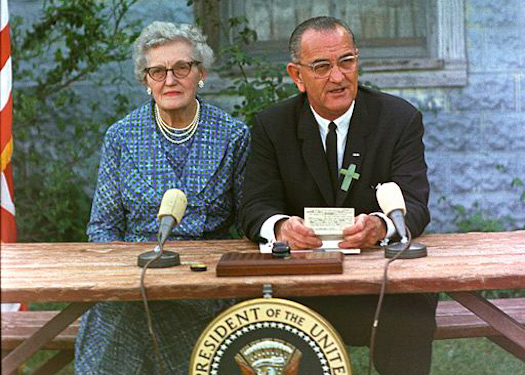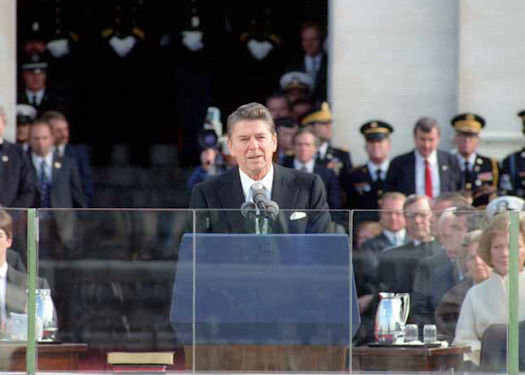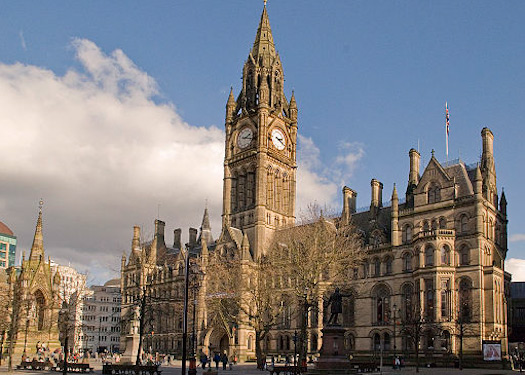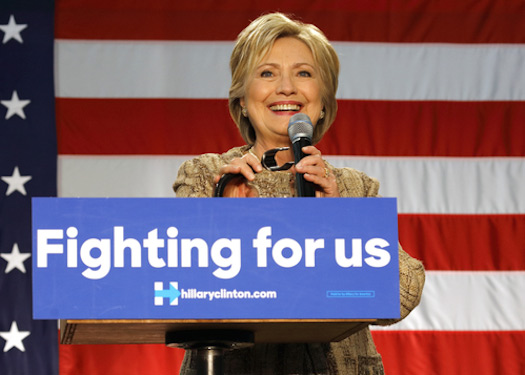Over the past two decades, partisan divisions and ideological polarization at the federal and state level have crippled the American political system. Yet while our broken politics have been difficult to watch, there has been a silver lining to the dysfunction: It has helped spark a burst of positive, pragmatic energy in the nation’s cities and metropolitan areas.
Cities and metros have been forging ambitious, bottom-up solutions in nearly every area of national importance: the skilling of workers, the education of children, the mitigation of climate change, the financing of infrastructure, the development of affordable housing, and the creation of quality places for our young and elderly populations.
This surge of innovative local action, combined with the paralysis at higher levels of government, has created a new dynamic in national problem-solving. Cities have become the primary engines of social and economic progress by planning, designing, and executing strategies to overcome their problems with limited or no help from Washington or their states. This has amounted to the emergence of a New American Localism.
Several times over the past century, presidents have entered office focused on remaking our nation's federalist compact, devoting enormous political capital to shifting the balance of power between the federal government and the states. Lyndon B. Johnson, Richard Nixon, and Ronald Reagan all saw remaking federalism as an essential component of achieving their governing vision.
Johnson’s “Great Society” legislation was an expansion of federal power rivaled only in scale by the New Deal, and his time in office was marked by an unprecedented increase in the number and size of federal grants to states and localities. This vaulted the federal government’s influence over states and localities to previously unseen heights.

President Lyndon Johnson’s Great Society marked a huge expansion of federal grants to states and localities. In 1965, President Johnson signed the Elementary and Secondary Education Act with his childhood schoolteacher, Kate Deadrich Loney, by his side.
Nixon’s “New Federalism” sought to “rationalize” government. He wanted to rein in the power that the federal government had acquired under Johnson and reduce the prescriptiveness of federal aid to states and localities, which he saw as intrusive and ineffective. The centerpiece of this component of his agenda was General Revenue Sharing, a program that provided no-strings-attached block grants to states and local governments via the federal income tax. But Nixon also saw the need to centralize a number of government functions, particularly in the regulatory realm. This was most clearly manifested in his creation of the Environmental Protection Agency and the Occupational Safety and Health Administration.
Where Nixon sought to “rationalize” government, Reagan sought to reduce it at all levels. Riding into office on a historic wave of anti-tax, anti-government sentiment, he slashed federal aid to states and localities, cut 62 federal grant programs completely (one-tenth of all federal grant programs) and consolidated 57 programs into nine new or revamped block grants, which included the Low-Income Home Energy Assistance Program, the Social Services Block Grant, the Community Services Block Grant, and the Community Development Block Grant.

President Ronald Reagan wanted to reduce the size of the government at all levels, and he slashed federal aid to states and localities.
The current moment would be better approached with a different strategy—one that goes beyond the bounds of traditional federalism, focusing less on the relationship between the federal government and the states, and more on the dynamic between the federal government and cities. States are often a critical middleman between cities and the federal government, and state policy often has much greater bearing on what cities are able to do than federal rules and regulations. Leadership in state capitals varies dramatically—some state governments have been critical partners in helping their cities succeed, while others have been near-constant antagonists to bottom-up metropolitan efforts.
Regardless, there are a great number of areas where the federal government can either bypass states and work directly with cities or encourage states to collaborate closely with cities on issues of mutual concern. The key imperative must be to strengthen the new localist dynamic that has taken root in the country.
The New American Localism at work
The emergence of a new era of localism can be seen throughout the country.
Montgomery County, Md., and Sacramento and San Jose, Calif., are reducing income inequality by raising the minimum wage. Denver, Los Angeles, and Oklahoma City are using locally generated revenues to build new infrastructure, while Broward County, Fla., King County, Wash., and San Antonio, Texas, are investing in children. Louisville, Ky., San Diego, Calif., and Syracuse, N.Y. are enhancing competitiveness by bolstering advanced manufacturing, exports, and foreign direct investment, while Atlanta, Ga., Chattanooga, Tenn., and Pittsburgh, Pa., are creating innovation districts to advance the commercialization of research and the start and scale-up of entrepreneurial firms.

Cities have taken the lead in trying to solve problems, such as Chattanooga, Tennessee, which has created innovative districts to support research and entrepreneurial firms.
These disparate actions share a number of common principles and represent just a few of the places undertaking innovative solutions.
To further energize cities, the next president must understand how the New American Localism is different from past approaches to problem-solving.
First, rather than relying on public-sector solutions alone, cities are harnessing the power generated when government, business, civic, philanthropic, university, and community institutions and leaders work collaboratively. The focus of the New American Localism on unlocking the latent capacity of public, private, and civic networks differs markedly from federalism’s traditional focus on relationships between levels of government, particularly the federal government and the states.
Second, cities and metropolitan areas are forging responses that are holistic and multidisciplinary and that are guided by local priorities. This is a sharp contrast from the federal penchant for one-size-sits-all, hyper-specific programs administered by slow-moving, siloed federal agencies. Tailoring solutions to the circumstances of local challenges and enabling cross-sector initiatives creates the opportunity to solve problems more efficiently and effectively than traditional federal approaches.
Finally, cities and metropolitan areas are deploying capital from an array of public, private, and civic sources at the local, national, and even global levels. Rethinking financing from the bottom up is imperative. With mandatory federal spending for older Americans rising, discretionary spending on infrastructure, education, and other competitive levers won’t keep pace with demand and population growth. Financing of critical investments, therefore, will increasingly come from collaboration between the public, private, and civic sectors at all levels and require experimentation around new forms of innovative finance.
A first-year agenda
Invigorating localism by remaking the relationship between the federal government and cities would be an historic accomplishment for our next president.
The next president’s top priority, of course, must be retaining strong federal support for activities that cities cannot undertake, like investing in the safety net, defense, and research and development at national labs and advanced research universities.
And the next administration must recognize that major legislative actions will be extremely difficult, given the likelihood of continued divided government. Thus, the next president should primarily focus on moves that leverage the existing powers of the executive branch.
There are a number of ways the next administration can strengthen the New American Localism that will not require major expansions of executive power. It should provide cities with more transparency with regard to federal and private investments, more flexibility in how cities use public resources, and a more comprehensive set of tools to leverage private and civic capital for transformative projects.
Transparency for cities
The federal government is the largest single investor in cities through a variety of tax, spending, and credit-enhancement vehicles, but the way it invests is unacceptably opaque. Incredibly, we know more about where banks lend (thanks to the Home Mortgage Disclosure Act) than where the federal government spends. A central mission for the next president should be to make federal resource flows more transparent. If cities had a clear sense of the full scope of federal investments flowing into their communities, they would be able to leverage that information for more effective local public action and greater private and civic investment. Here are some ideas for federal action:

New Orleans, like many cities, has to navigate dozens of services and numerous grants to try to create better outcomes for its citizens. The federal government should allow cities to adapt federal investments to local conditions.
Flexibility for cities
Once the next president helps provide a clearer look at metropolitan finance streams, he or she should give cities the flexibility to adapt federal investments in transportation, housing, workforce development, education, and other domestic areas to their specific needs and local priorities. The resources the federal government provides are heavily prescriptive and compartmentalized, making it extremely difficult for cities to create coherent local strategies to address their toughest problems. For example, in its efforts to create better outcomes for disconnected youth, New Orleans must navigate eight separate funding streams for workforce development, six for education, eight for human services, and six for justice, housing, and other services. Ten of these grants are worth less than $2 million, and several are so miniscule they can hardly be cost-effective to administer. This approach is completely out of sync with the networked and integrated way that cities solve problems today. Federal resources should be provided with fewer prescriptions, and cities should have the ability to adapt federal investments to local conditions in exchange for greater accountability.

The greater Manchester area in the United Kingdom has more power devolved to it than any other British city. This model might allow cities to have greater flexibility and discretion on how to spend federal funds.
The next president should consider emulating the “City Deals” and devolution agreement process underway in the United Kingdom, which has created a vehicle for British cities to gain greater flexibility and discretion in how central government funds are used locally.
The Greater Manchester area, for example, has had more power devolved to it than any other British city. On April 1, 2016, it was granted full control of its £6 billion health and social care budget. The city will use these resources to better integrate health and social services, creating a more holistic and efficient health care system that reduces the frequency of hospital re-admittance, shortens the length of expensive hospital stays, and devotes resources in ways that better match local needs. Manchester’s full control of its health care resources comes in addition to substantially increased powers over transportation, housing and planning, education, and employment support.
The next president could begin a similar process, providing the opportunity for cities, counties, or metro areas to apply for the ability to allocate federal resources to drive specific social, economic, or environmental outcomes rather than attempt to braid together many small federal grants with rigid determinations into a coherent local strategy. One city, for example, might argue for aggregating funding in a particular community to boost youth employment or educational achievement; another might integrate housing and social service funding in a concerted effort to end homelessness. “City Deals” would better align federal resources with local priorities and fully unleash the creative problem-solving potential of local public, private, and civic actors. The flexibility could be granted to city governments; a consortium of public, private, and civic leaders; metropolitan planning organizations; large-scale nongovernmental organizations; or even partnerships between metropolitan areas and supportive state governments. Regardless of the specifics from place to place, City Deals would be a badly needed corrective to the notion that the dizzying array of small federal grant programs provided to American communities can somehow match the varying needs and conditions on the ground.
Finance for cities
Finally, the federal government should work to use federal investments to leverage public, private, and civic capital to the maximum extent possible. Smart leveraging should start with the credit enhancement authorities and regulatory powers that the federal government already possesses. Here are several areas where a heightened focus on smart execution under the next administration would be helpful to cities focused on innovative, inclusive, and sustainable growth:
A bipartisan compact on devolution?
After years of federal ineffectiveness, it may seem hopelessly bold to suggest our next president reform the way Washington interacts with cities. But there is reason to believe federal leadership across both political parties may be ready to empower cities and metropolitan areas.
It is noteworthy that since 2009, a period of unprecedented gridlock, Congress has managed to reauthorize the major federal education, transportation, and workforce investment programs in ways that provide cities, metropolitan areas, and states with greater flexibility in the deployment of federal resources.

Democratic presidential nominee Hillary Clinton has made calls for a new “flexible federalism,” supporting the need for greater flexibility at the local level.
These legislative successes could point to new possibilities for bipartisan collaboration in what is likely to be continued divided government after the November 2016 elections.
Local control has been a longstanding tenet of Republican conservatism. To a large extent, pushing for greater devolution of power and responsibilities would return the Republican Party to the conservative federalist visions espoused by Presidents Nixon, Reagan, and George H.W. Bush. It could also bring coherence to the next conservativism articulated by intellectuals like Yuval Levin, the editor of “National Affairs.” As Levin argues, a diverse, dynamic society requires conservatives to empower local problem-solvers “to mix resources, advice, experience, and more leadership in a continuing process of bottom-up experimentation.”
For their part, Democrats, long seen as the party supporting central government power and uniform national solutions, could pursue a more realpolitik path that aligns with the political fact that Democrats control many central cities and urban counties. The Obama Administration has made a number of small but promising moves empowering local areas with initiatives like the Partnership for Sustainable Communities, the Performance Partnerships for Disconnected Youth, the National Network for Manufacturing Innovation, and the Upward Mobility Project. Encouragingly, Democratic presidential nominee Hillary Clinton has also made calls for a new “flexible federalism,” joining countless Democratic (and, for that matter, Republican) mayors, county officials, and state leaders who have long rallied around the need for greater flexibility at the local level.
Moving forward
It’s time for the federal government to recognize national reality: Responsibility for solving problems is shifting downward to cities. It must adjust the way it interacts with cities accordingly by becoming more of a partner and less of a decider, and more of an enabler and less of a dictator. Strengthening American localism will be the most effective and politically savvy way for the next administration to navigate our broken political system and energize progress on issues of grave concern to millions of Americans.